What is a plc fiber optic splitter?
PLC fiber optic splitter, also known as PLC Splitter or Fiber Splitter based on planar lightwave circuit. It uses photolithography technology to form optical waveguides on a medium or semiconductor substrate to achieve branch distribution functions. The optical fiber device with distribution function is one of the most important passive devices in the optical fiber link. It is a fiber optic tandem device with multiple input ends and multiple output ends. M×N is often used to indicate that a splitter has M inputs. terminal and N output terminals. As the core component of FTTx network, fiber optic PLC splitter needs to be installed at 1270nm, 1310nm, 1490nm, 1550nm, 1577nm, 1625nm, 1650nm considering the application requirements of PON network, including EPON/GPON, 10G PON, ODN online test and other requirements. The equal wavelength window has good working performance, and the Fiber Splitter should support working wavelengths from 1260nm to 1650nm.
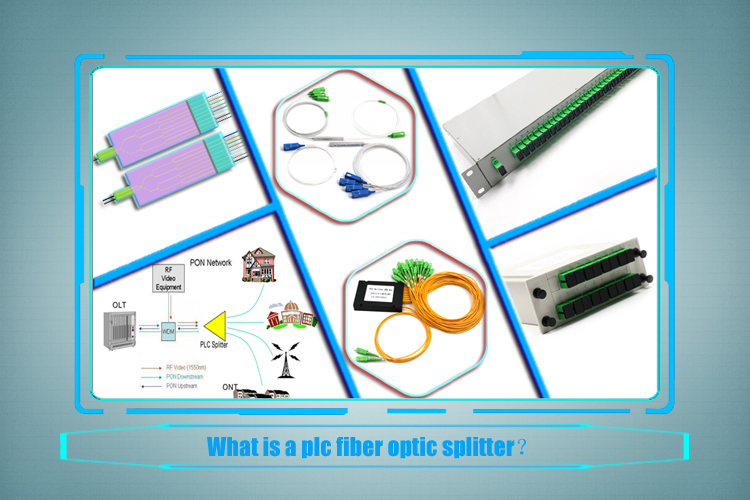 How to realize the light splitting principle of PLC fiber optic splitter?
PLC is the English abbreviation of planar lightwave circuit, that is, planar optical waveguide. Different from traditional discrete devices, PLC devices are made by semiconductor process, which can integrate optical elements with different functions into one chip. It is the basic process technology to realize the integration, modularization and miniaturization of photoelectric devices. The PLC splitter chip is made by semiconductor technology. The optical waveguide array is located on the upper surface of the chip, and the shunting function is integrated on the chip, that is, the shunting is realized on one chip, and then the multi-channel optical fiber arrays at the input and output ends are coupled at both ends of the chip to encapsulate the optical path of the waveguide.
What are the common technical indicators of plc fiber optic splitter?
a.Insertion loss (IL)
The insertion loss of the fiber splitter refers to the reduction of the optical power of the working wavelength at the specified output port relative to the total input optical power.
b. Additional loss
The additional loss is defined as the number of dB of the sum of the optical power of all output ports of the fiber optic PLC splitter relative to the input optical power loss
c. Spectral ratio
The splitting ratio is defined as the ratio of the output power of each output port of the fiber splitter. In system applications, the splitting ratio is indeed based on the optical power required by the actual system optical node to determine the appropriate splitting ratio (except for the average distribution). The splitting ratio of the splitter is related to the wavelength of the transmitted light.
d. Isolation
Isolation refers to the isolation ability of a certain optical path of the fiber splitter to the optical signals in other optical paths
e.Directivity (DL)
Directivity refers to the output optical power and the injected optical power of the non-injected optical-end on the same side when the PLC Splitter is working normally.
ratio of rate (measured wavelength)
f. Uniformity (FL)
Uniformity refers to the output optical power of each output port of the optical splitter of the PLC Splitter within the working bandwidth range.
The maximum change in rate.
g. polarization dependent loss (PDL)
The polarization dependent loss refers to the output of each output port of the PLC Splitter when the polarization state of the transmitted optical signal changes in the full polarization state.
Maximum change of output power
h.Return loss(RL)
Return loss is a measure of the input optical power to the PLC Splitter that is returned along the input path.
Among the above indicators, the isolation degree is more significant to the fiber splitter. In practical system applications, devices with isolation degree above 40dB are often required, otherwise the performance of the entire system will be affected. In addition, the stability of the fiber splitter is also an important indicator. The so-called stability means that when the external temperature changes and the working state of other devices changes, the splitting ratio and other performance indicators of the fiber splitter should remain basically unchanged. In fact, the optical power The stability of the splitter depends entirely on the technology level of the fiber optic plc splitter manufacturer. The products of different manufacturers have different product quality. As an important component of the optical fiber link, you must pay attention when purchasing, not just focus on the fiber optic plc splitter Price, and fiber optic plc splitter manufacturer must pay attention to the craftsmanship level.
What are the main raw materials used by fiber optic plc splitter manufacturer?
1. PLC chip
The chip is made by semiconductor technology (photolithography, etching, development, etc.). The optical waveguide array is located on the upper surface of the chip, and the shunt function is integrated on the chip, that is, the shunt is realized on one chip, and then the multi-channel optical fiber arrays at the input end and the output end are coupled at both ends of the chip and package the waveguide. light path.
2. Fiber Array
Fiber Array is made with V-groove, using a special bonding process to achieve precise fiber positioning and high reliability to meet different needs. The thermal expansion coefficient matching package design ensures the fiber array board is stress-free, high reliability and no fiber displacement at high temperature. The end face angles can be precisely ground as required. Compliant with Telcordia GR-1209-CORE and GR-1221-CORE Standard.
Fiber Array mainly relies on precise V-grooves to achieve positioning, and fiber spacing is the most important inspection item. The error of the longitudinal distance (called Deviation) of the two is generally controlled within ±0.5μm, and the distance between the centers of adjacent fibers is 127um/250um.
In the process of fiber optic plc splitter manufacturer, what are the points worth noting?
1. In the process of fiber optic plc splitter manufacturer, the precise connection between PLC Splitter and Fiber Array is the key to PLC debugging technology. The technique of aligning them one by one and then bonding them together with a specific coupling glue. We also call this process of fiber optic plc splitter manufacturer's process as key process control.
2. In order to ensure the high reliability and service life of fiber optic PLC splitter equipment in various application environments, the products comply with Telcordia GR-1209-CORE and GR-1221-CORE standards, and fiber optic plc splitter manufacturer processes are all aging Cycle this made.
How to realize the light splitting principle of PLC fiber optic splitter?
PLC is the English abbreviation of planar lightwave circuit, that is, planar optical waveguide. Different from traditional discrete devices, PLC devices are made by semiconductor process, which can integrate optical elements with different functions into one chip. It is the basic process technology to realize the integration, modularization and miniaturization of photoelectric devices. The PLC splitter chip is made by semiconductor technology. The optical waveguide array is located on the upper surface of the chip, and the shunting function is integrated on the chip, that is, the shunting is realized on one chip, and then the multi-channel optical fiber arrays at the input and output ends are coupled at both ends of the chip to encapsulate the optical path of the waveguide.
What are the common technical indicators of plc fiber optic splitter?
a.Insertion loss (IL)
The insertion loss of the fiber splitter refers to the reduction of the optical power of the working wavelength at the specified output port relative to the total input optical power.
b. Additional loss
The additional loss is defined as the number of dB of the sum of the optical power of all output ports of the fiber optic PLC splitter relative to the input optical power loss
c. Spectral ratio
The splitting ratio is defined as the ratio of the output power of each output port of the fiber splitter. In system applications, the splitting ratio is indeed based on the optical power required by the actual system optical node to determine the appropriate splitting ratio (except for the average distribution). The splitting ratio of the splitter is related to the wavelength of the transmitted light.
d. Isolation
Isolation refers to the isolation ability of a certain optical path of the fiber splitter to the optical signals in other optical paths
e.Directivity (DL)
Directivity refers to the output optical power and the injected optical power of the non-injected optical-end on the same side when the PLC Splitter is working normally.
ratio of rate (measured wavelength)
f. Uniformity (FL)
Uniformity refers to the output optical power of each output port of the optical splitter of the PLC Splitter within the working bandwidth range.
The maximum change in rate.
g. polarization dependent loss (PDL)
The polarization dependent loss refers to the output of each output port of the PLC Splitter when the polarization state of the transmitted optical signal changes in the full polarization state.
Maximum change of output power
h.Return loss(RL)
Return loss is a measure of the input optical power to the PLC Splitter that is returned along the input path.
Among the above indicators, the isolation degree is more significant to the fiber splitter. In practical system applications, devices with isolation degree above 40dB are often required, otherwise the performance of the entire system will be affected. In addition, the stability of the fiber splitter is also an important indicator. The so-called stability means that when the external temperature changes and the working state of other devices changes, the splitting ratio and other performance indicators of the fiber splitter should remain basically unchanged. In fact, the optical power The stability of the splitter depends entirely on the technology level of the fiber optic plc splitter manufacturer. The products of different manufacturers have different product quality. As an important component of the optical fiber link, you must pay attention when purchasing, not just focus on the fiber optic plc splitter Price, and fiber optic plc splitter manufacturer must pay attention to the craftsmanship level.
What are the main raw materials used by fiber optic plc splitter manufacturer?
1. PLC chip
The chip is made by semiconductor technology (photolithography, etching, development, etc.). The optical waveguide array is located on the upper surface of the chip, and the shunt function is integrated on the chip, that is, the shunt is realized on one chip, and then the multi-channel optical fiber arrays at the input end and the output end are coupled at both ends of the chip and package the waveguide. light path.
2. Fiber Array
Fiber Array is made with V-groove, using a special bonding process to achieve precise fiber positioning and high reliability to meet different needs. The thermal expansion coefficient matching package design ensures the fiber array board is stress-free, high reliability and no fiber displacement at high temperature. The end face angles can be precisely ground as required. Compliant with Telcordia GR-1209-CORE and GR-1221-CORE Standard.
Fiber Array mainly relies on precise V-grooves to achieve positioning, and fiber spacing is the most important inspection item. The error of the longitudinal distance (called Deviation) of the two is generally controlled within ±0.5μm, and the distance between the centers of adjacent fibers is 127um/250um.
In the process of fiber optic plc splitter manufacturer, what are the points worth noting?
1. In the process of fiber optic plc splitter manufacturer, the precise connection between PLC Splitter and Fiber Array is the key to PLC debugging technology. The technique of aligning them one by one and then bonding them together with a specific coupling glue. We also call this process of fiber optic plc splitter manufacturer's process as key process control.
2. In order to ensure the high reliability and service life of fiber optic PLC splitter equipment in various application environments, the products comply with Telcordia GR-1209-CORE and GR-1221-CORE standards, and fiber optic plc splitter manufacturer processes are all aging Cycle this made.
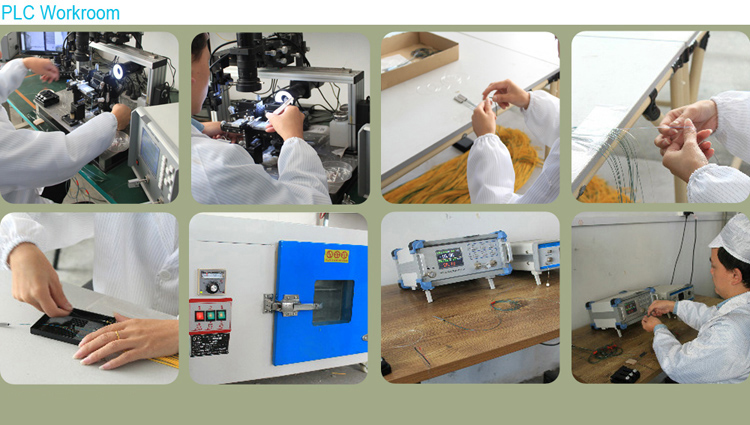 Next, introduce the advantages and disadvantages of PLC fiber optic splitter. What are their advantages and disadvantages?
First introduce its advantages:
.The loss is not sensitive to the optical wavelength and can meet the transmission needs of different wavelengths.
. the light distribution is uniform, and the signal can be evenly distributed to users.
.There are many shunting channels for a single device, which can reach more than 64 channels..
.The more shunts, the more obvious the cost advantage.
.With compact structure and small volume, it can be directly installed in various existing handover boxes without leaving a large installation space.
Its disadvantages are mainly reflected in technology and cost, as follows:
.At present, the chip is monopolized by several foreign companies, and few domestic enterprises can package and produce in large quantities.
.Compared with the fused taper splitter, the cost is higher, especially in the low channel splitter.
The plc fiber optic splitter can be used as an independent device in OLT nodes, optical distribution points, user access points, or can be placed in other central office distribution facilities, optical distribution points and user access point facilities (integrated design or available Pluggable) use, then, what are its specific application types?
a. Bare fiber plc fiber optic splitter
Bare fiber plc fiber optic splitter directly uses optical fiber (usually ribbon fiber) fanout, and does not have fiber optic connectors at both ends. In practical applications, fiber optic splicing is used for access, which is very easy to put into conventional splice boxes, various types of storage tray, etc. Mainly suitable for small space installation, infrequent disassembly and occasions that do not require special design reserved space, such as optical cable splice boxes, optical fiber distribution trays.
Next, introduce the advantages and disadvantages of PLC fiber optic splitter. What are their advantages and disadvantages?
First introduce its advantages:
.The loss is not sensitive to the optical wavelength and can meet the transmission needs of different wavelengths.
. the light distribution is uniform, and the signal can be evenly distributed to users.
.There are many shunting channels for a single device, which can reach more than 64 channels..
.The more shunts, the more obvious the cost advantage.
.With compact structure and small volume, it can be directly installed in various existing handover boxes without leaving a large installation space.
Its disadvantages are mainly reflected in technology and cost, as follows:
.At present, the chip is monopolized by several foreign companies, and few domestic enterprises can package and produce in large quantities.
.Compared with the fused taper splitter, the cost is higher, especially in the low channel splitter.
The plc fiber optic splitter can be used as an independent device in OLT nodes, optical distribution points, user access points, or can be placed in other central office distribution facilities, optical distribution points and user access point facilities (integrated design or available Pluggable) use, then, what are its specific application types?
a. Bare fiber plc fiber optic splitter
Bare fiber plc fiber optic splitter directly uses optical fiber (usually ribbon fiber) fanout, and does not have fiber optic connectors at both ends. In practical applications, fiber optic splicing is used for access, which is very easy to put into conventional splice boxes, various types of storage tray, etc. Mainly suitable for small space installation, infrequent disassembly and occasions that do not require special design reserved space, such as optical cable splice boxes, optical fiber distribution trays.
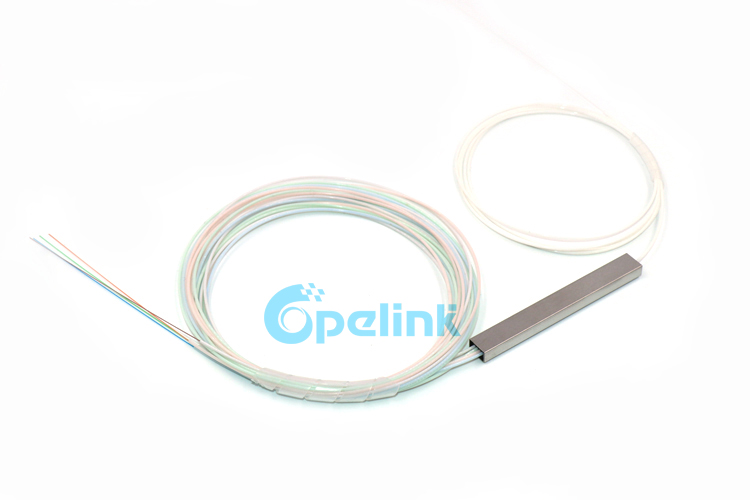 b.Fanout plc fiber optic splitter
Fanout plc fiber optic splitter refers to a small optical splitter assembly that uses a small splitter box (which can be fixed on the box body) and a 0.9mm sleeve at the output end on the base of the bare fiber fiber splitter.
b.Fanout plc fiber optic splitter
Fanout plc fiber optic splitter refers to a small optical splitter assembly that uses a small splitter box (which can be fixed on the box body) and a 0.9mm sleeve at the output end on the base of the bare fiber fiber splitter.
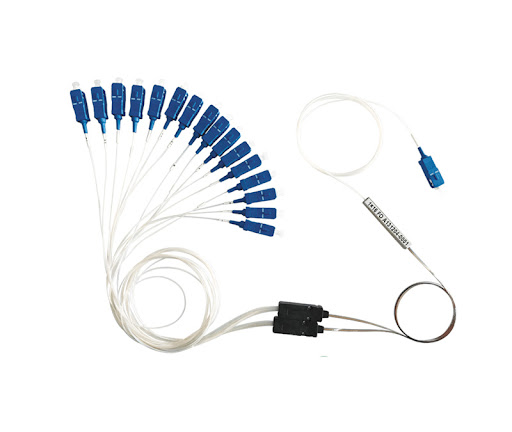 c.ABS cassette plc fiber optic splitter
ABS box plc fiber optic splitter is packaged in ABS plastic box, and the port is led out by pigtail. The OD of the pigtail is usually 0.9mm, 2.0mm, and 3.0mm. The product has loose requirements on the placement position and environment. The small size box design can be placed in the box (such as optical cable junction box, corridor wiring, fiber distribution box, etc.) or in the splice box with a certain space reserved.
c.ABS cassette plc fiber optic splitter
ABS box plc fiber optic splitter is packaged in ABS plastic box, and the port is led out by pigtail. The OD of the pigtail is usually 0.9mm, 2.0mm, and 3.0mm. The product has loose requirements on the placement position and environment. The small size box design can be placed in the box (such as optical cable junction box, corridor wiring, fiber distribution box, etc.) or in the splice box with a certain space reserved.
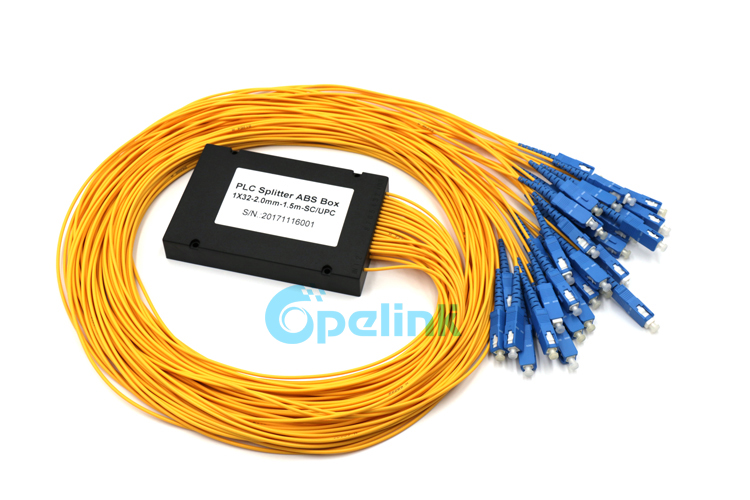 d. Micro pigtail plc fiber optic splitter
Mini plc fiber optic splitter refers to a small fiber optic PLC splitter component that is packaged in steel pipes and uses a 0.9mm loose tube for pigtails. It is mainly suitable for tight installation space, such as optical cable splice boxes, optical fiber splitter boxes, and can also be installed in insert-type and rack-type fiber optic PLC splitter combination boxes.
d. Micro pigtail plc fiber optic splitter
Mini plc fiber optic splitter refers to a small fiber optic PLC splitter component that is packaged in steel pipes and uses a 0.9mm loose tube for pigtails. It is mainly suitable for tight installation space, such as optical cable splice boxes, optical fiber splitter boxes, and can also be installed in insert-type and rack-type fiber optic PLC splitter combination boxes.
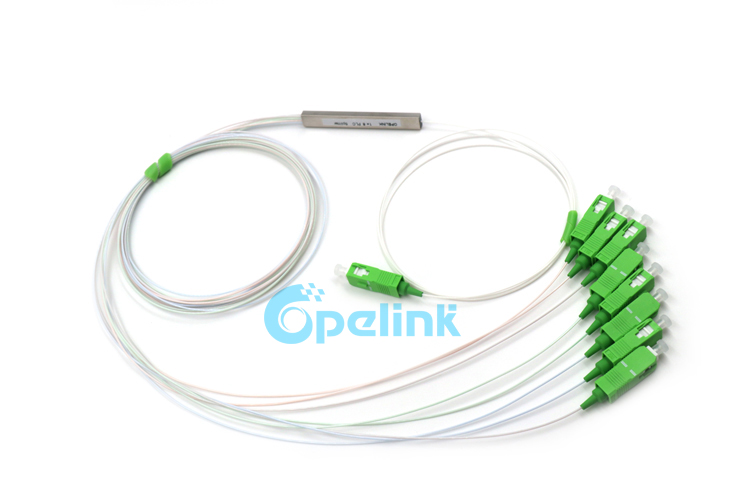 e. Cassette type plc fiber optic splitter
The plug-in Cassette type plc fiber optic splitter is packaged in an ABS plastic box, and the ports are end-type. Mainly installed in the optical fiber junction box.
e. Cassette type plc fiber optic splitter
The plug-in Cassette type plc fiber optic splitter is packaged in an ABS plastic box, and the ports are end-type. Mainly installed in the optical fiber junction box.
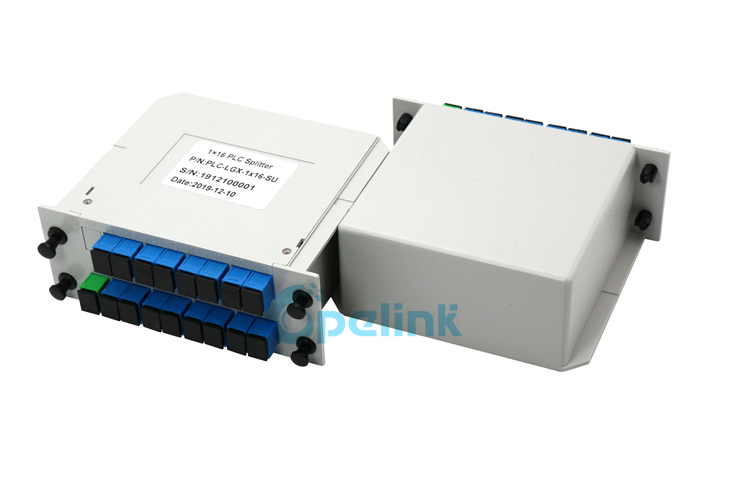 f. Tray-type plc fiber optic splitter
Tray-type plc fiber optic splitter refers to packaging with a tray similar to a fiber distribution tray, using a plastic tray. There are one or two FC (or SC) Adapters on the panel, which are used as optical fiber input ends; several FC (or SC) Adapters are used as optical fibers. The output end has a compact structure and is plug-and-play by the user. It can be installed in the optical cable transfer box, ODF rack, etc., which is convenient for the unified management of optical fiber splitters and optical wiring.
f. Tray-type plc fiber optic splitter
Tray-type plc fiber optic splitter refers to packaging with a tray similar to a fiber distribution tray, using a plastic tray. There are one or two FC (or SC) Adapters on the panel, which are used as optical fiber input ends; several FC (or SC) Adapters are used as optical fibers. The output end has a compact structure and is plug-and-play by the user. It can be installed in the optical cable transfer box, ODF rack, etc., which is convenient for the unified management of optical fiber splitters and optical wiring.
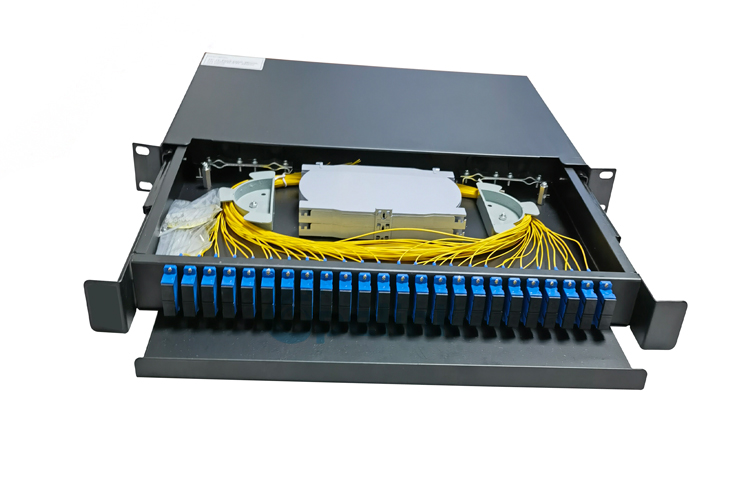 g. Rack-mounted plc fiber optic splitter
The rack-mounted plc fiber optic splitter is packaged in a metal box and can be installed in a 19-inch 1U standard cabinet. It is mainly used in optical cable distribution boxes, optical fiber distribution frames, etc.
g. Rack-mounted plc fiber optic splitter
The rack-mounted plc fiber optic splitter is packaged in a metal box and can be installed in a 19-inch 1U standard cabinet. It is mainly used in optical cable distribution boxes, optical fiber distribution frames, etc.
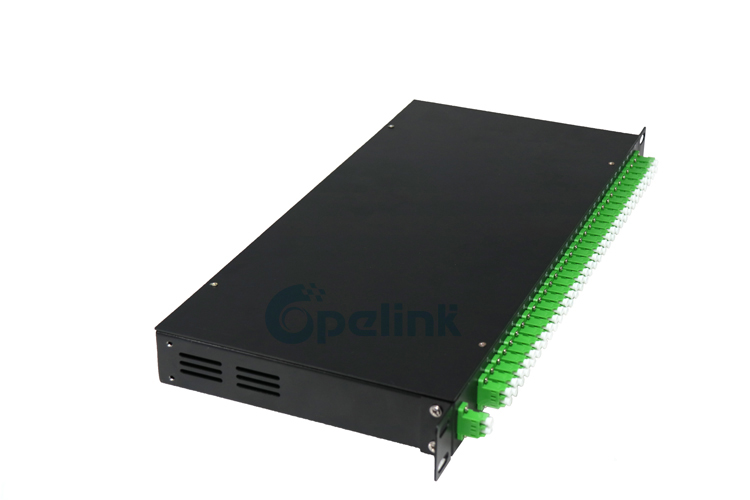 Let's briefly introduce the application scenarios of plc fiber optic splitter. What are the specific applications?
Fiber splitters are generally used between optical line terminals and optical network terminals in passive optical networks. In the network system using Broadband Passive Optical Network (BPON), Passive Optical Network (GPON), Ethernet Optical Network (EPON), 10G Ethernet Optical Network (EPON) and 10G Passive Optical Network (GPON) technologies Use fiber splitters. In a passive optical network, only one fiber splitter may be used, or multiple optical splitters may be used together to split optical signals. The centralized distribution of optical splitters is generally used in the application of centralized distribution of users. Sometimes, the optical splitter can also be placed at the central office end for splitting. At this time, it is necessary to deploy optical fiber cables between the central office end and each user.
With the wide application of FTTH network, in order to serve more users, people have higher and higher requirements for the number of optical splitters of fiber splitter. Therefore, plc fiber optic splitter has become a popular passive device in FTTH applications due to its advantages of large number of branches and uniform light splitting. OPELINK is a professional Fiber Optic PLC Splitter Supplier, providing a full range of Fiber splitter Products, including 1xN, 2xN products in various packaging forms, especially the fiber optic plc splitter 1x8 type products, which are widely used and sold.
Let's briefly introduce the application scenarios of plc fiber optic splitter. What are the specific applications?
Fiber splitters are generally used between optical line terminals and optical network terminals in passive optical networks. In the network system using Broadband Passive Optical Network (BPON), Passive Optical Network (GPON), Ethernet Optical Network (EPON), 10G Ethernet Optical Network (EPON) and 10G Passive Optical Network (GPON) technologies Use fiber splitters. In a passive optical network, only one fiber splitter may be used, or multiple optical splitters may be used together to split optical signals. The centralized distribution of optical splitters is generally used in the application of centralized distribution of users. Sometimes, the optical splitter can also be placed at the central office end for splitting. At this time, it is necessary to deploy optical fiber cables between the central office end and each user.
With the wide application of FTTH network, in order to serve more users, people have higher and higher requirements for the number of optical splitters of fiber splitter. Therefore, plc fiber optic splitter has become a popular passive device in FTTH applications due to its advantages of large number of branches and uniform light splitting. OPELINK is a professional Fiber Optic PLC Splitter Supplier, providing a full range of Fiber splitter Products, including 1xN, 2xN products in various packaging forms, especially the fiber optic plc splitter 1x8 type products, which are widely used and sold.









 CWDM vs. DWDM: Which Optical Transmission Technology Should You Choose?
CWDM vs. DWDM: Which Optical Transmission Technology Should You Choose?
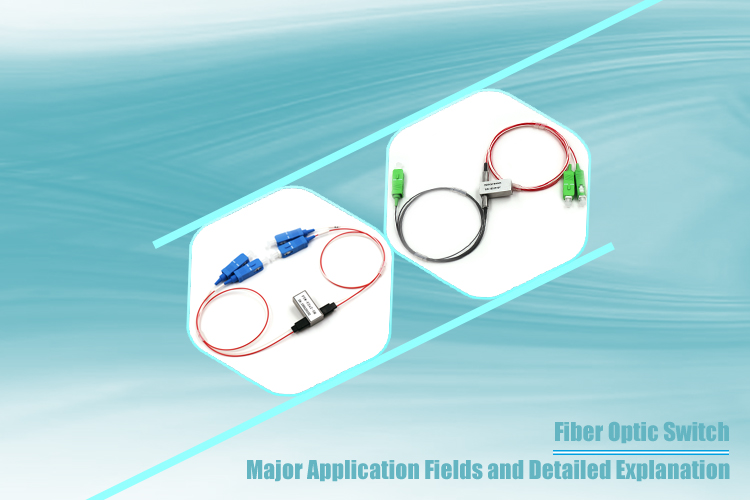 Major Application Fields and Detailed Explanation of Fiber Optic Switch
Major Application Fields and Detailed Explanation of Fiber Optic Switch
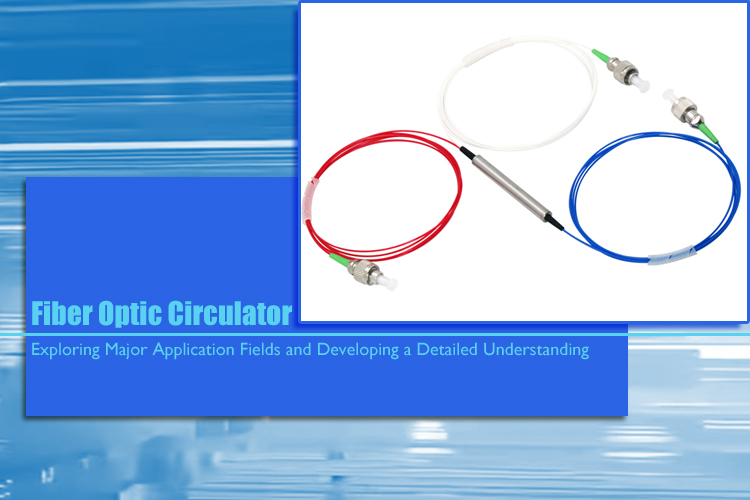 Exploring Major Application Fields and Developing a Detailed Understanding of Fiber Optic Circulator
Exploring Major Application Fields and Developing a Detailed Understanding of Fiber Optic Circulator
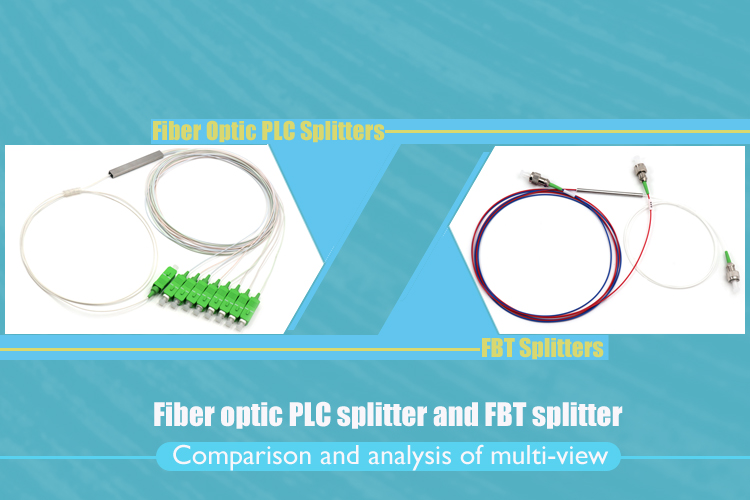 Comparison and analysis of multi-view between fiber optic PLC splitter and FBT splitter
Comparison and analysis of multi-view between fiber optic PLC splitter and FBT splitter